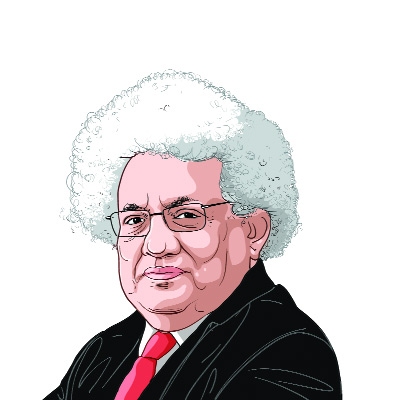Opinion Women come last
On the centenary of the International Womens Day,a young woman gets murdered in broad daylight in Delhi.
On the centenary of the International Womens Day,a young woman gets murdered in broad daylight in Delhi. Last week,came the news that sixteen women had died in Jodhpur (the doctors must have been all men,I presume. Worse,if some doctors were women). The Union Health Minister has not visited the hospital,as far as I can tell. No doubt his excuse is,that it is a State subject and it is Ashok Gehlots job to commiserate. The Womens Reservation Bill will be talked out again because the dadas of Mandalism will put spokes in the wheel. Women come last.
There is a real puzzle here. In Indian politics,we have women at the top across the boardthe President,the Speaker of the Lok Sabha,the president of the Congress Party,the leader of the Opposition in Lok Sabha,chief ministers of Delhi and Uttar Pradesh and likely chief ministers of Tamil Nadu and West Bengal. And yet,women disappear from the population,starting before birth when the foetus is aborted,or when young baby girls are starved or poisoned or neglected,get beaten up as young brides who have not brought enough dowry or worse killed by their khap panchayats,if they exercise their right to choose a partner,or die in childbirth or suffer neglect in their old age. How do we explain this contrast between the top and the rest?
It is,of course,a combination of class and gender. Upper caste/upper class women have more opportunities to excel and enough domestic support to pursue a career unlike a Western woman trying to combine domestic chores with job demands. Yet it helps if the woman leader is unmarried or,rarely,has a very accommodating partner (as President Patil seems to have). Husbands in their prime put their career first and concede the top place to their wives only as a last resort. Lalu Prasad Yadavs promotion of Rabri Devi is an example.
But womens neglect goes deeper in my view. It is deep in Indian culture from the earliest times. If you read the Bhagavad Gita,there are only two mentions of women in the entire 700 slokas. One,where in the first adhyaya,Arjun,while lamenting the possible consequences of his action,says if he kills his cousins there will be kula-nash (destruction of the kin group). Women will go astray in such a case and there will be mixing of varnas,ie miscegenation (adhyaya 1,verse 41). Krishna doesnt reply to this objection but persuades him to go and kill.
Later,Krishna is heard to say that even those born of evil wombs (papayonayah) ie women,Vaishyas and Shudras,can come to him if they show bhakti (adhyaya 9,verse 32). These two slokas apart,both negative for women,the entire discourse in the Gita is male-oriented. One gets the distinct impression that this is man-to-man talk or perhaps god-to-man talk and the subtleties of karma yoga and jnana yoga are not for women (or even for Vaishyas and Shudras,to say nothing of the Dalits and tribals).
Many men have written learned commentaries on the Gita but how many women have? Annie Beasant is the only one I can recall. No doubt,there are some,yet the Gita has remained a male preserve. This is not an accident. The Gita is a woman-unfriendly document. But then,so are the great epics.
Women are subjected to many humiliationsDraupadi stripped and nearly raped in an open assembly full of men who are her relations by marriage (the miracle rescue by Krishna reclothing her is not in the standard edition of the Mahabharat,Sita having to set herself on fire twice to prove and reprove her chastity,women petrified literally for adultery (Ahalya) or beheaded by their sons or husbands. India will be a superpower only when its women have a decent normal prospect of living well to a healthy late age. Dont hold your breath.





